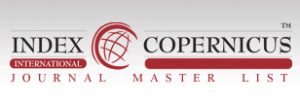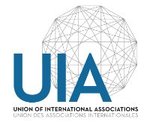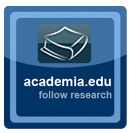Science and Education a New Dimension
Iss. 159. 2018.
T. Anokhina Rendering allusions and intertextual lacunae
https://doi.org/10.31174/SEND-Ph2018-159VI46-01
Abstract. The paper has revealed how lacunae can be rendered if they are allusions or intertextual lacunae. The problem of lacunae interpretation is still open and is making the object of the article. The way lacunae are eliminated in translation is the subject of the article. Lacunology and Translation Studies have different techniques how to render allusions, relalia, intertexual lacunae and cultural specifics. What technique to choose is the current problem of Lacunology and Translation Studies. The cultural and semantic equivalence are the techniques among many for translators to choose. Upon their choice of addition or omission depends the true storytelling.
Keywords: lacunae, intertextual lacunae, allusions, cultural equivalence, semantic equivalence
T. Anokhina Rendering allusions and intertextual lacunae
A. G. Baghdasaryan On some aspects of study of invariant in translation
https://doi.org/10.31174/SEND-Ph2018-159VI46-02
Abstract. The article is dedicated to the study of the equivalent in translation based on different aspects regarding the issue. The study let to come to the conclusion that the equivalent is a common element of the source and translated texts (situation, information, function, style, structure, etc), which is determined by the communicative intention of the author of the original text, the functional- communicative characteristics and also by the peculiarities of the translated language and culture.
Keywords: equivalent, translation, adequacy, communicative intention, functional-communicative aspect of utterance.
A. G. Baghdasaryan On some aspects of study of invariant in translation
T. Borysova Stylistic means of the cohesion implementation in Stephen King’s fiction (case study of the novel "Storm of the Century")
https://doi.org/10.31174/SEND-Ph2018-159VI46-03
bstract. The article is devoted to the issue of the cohesion as the text category in modern linguistics and stylistic means of its implementation on the material of the story by Stephen King “Storm of the Century”. The different types of linguistic units that are used to create explicit connectivity in the literary text are identified, their functions in fiction are analyzed in the course of our investigation. Particular attention is paid to the repetition and personalization as well, that dominate in the text that serves as our study material.
Keywords: category of coherence, cohesion, personification, repetition, implicity, explicity.
T. Borysova Stylistic means of the cohesion implementation in Stephen King’s fiction (case study of the novel “Storm of the Century”)
D. O. Chystiak Mythopoeic cosmology in the symbolist poetry of Volodymyr Svidzinskyi
https://doi.org/10.31174/SEND-Ph2018-159VI46-04
Abstract. The article deals with the modeling of the verbalization of the cosmological worldview in the poetic texts of the prominent Ukrainian writer Volodymyr Svidzinskyi in the context of the conceptual worldview in the language of other Ukrainian symbolist poets. The central place in the conceptual system is occupied by SUN as the correlate of FIRE in the opposition to the PRECIPICE of DARKNESS. In the microcosmic delimitation of the individual imagery of NATURE the author shows the macrocosm whereas in the search of ETERNITY the opposition SEA–FIELD is reflecting not the meaning of space but the meaning of time. In that context the concepts MAN-CREATOR and CREATIVE WORD are linked to the poetics of the natural elements.
Keywords: symbolism, cosmology, conceptual system, myth, text.
D. O. Chystiak Mythopoeic cosmology in the symbolist poetry of Volodymyr Svidzinskyi
I. N. Gapyeyeva. O. V. Koval Verbal reflection of gender stereotypes (on the material of Ukrainian Proverbs)
https://doi.org/10.31174/SEND-Ph2018-159VI46-05
Abstract. This article deals with a study of Parameological Fund of the Ukrainian language for the verbal reflection of gender stereotypes about male and female behavior and lifestyle. The authors define and explain the ways of formation of gender stereotypes that are consciously or unconsciously placed in the person’s world while reading the quintessence of folk wisdom – proverbs and sayings. The conclusions summarize that speech stereotypes are communicative idioms, on which the gender-marked functional significance is situationally fixed.
Keywords: verbal, paremiology, stereotype, gender.
I. N. Gapyeyeva. O. V. Koval Verbal reflection of gender stereotypes (on the material of Ukrainian Proverbs)
T. М. Halai, I. M. Osovska Metaphorical modeling of English geological terminology
https://doi.org/10.31174/SEND-Ph2018-159VI46-06
Abstract. The article is devoted to the reconstruction of metaphoric models in the terminology of the modern English LSP of geology by A. Chudinov’s method. It is established that for modern English LSP of geology is characterized by a variety of sources of metaphorization. Different objects of geological science (relief, breeds, minerals, reservoirs, glaciers, deposits, geological bodies as well as geological tools) are subjected to metaphorical rethinking which are conceptualized through the prism of 16 spheres of sources (human world, architecture, economy, transport, etc.). Metaphorical terms are grouped by four specifically structured cognitive models – anthropomorphic, artefact, natural, and social.
Keywords: terminology, language for specific purposes, metaphorization, cognitive model, geology.
T. М. Halai, I. M. Osovska Metaphorical modeling of English geological terminology
T. A. Lasinska Resources of reproducing English archaic and historic words into Ukrainian
https://doi.org/10.31174/SEND-Ph2018-159VI46-07
Abstract. The article contains the description of main sources of effective reproducing English archaic and historical words in Ukrainian translations which are taken from literature springs, dictionaries and spoken language. Some stylistic specificities of the target and the source language are considered.
Keywords: archaisms, obsolete words, old words, historical words, archaic vocabulary, translating historical and archaic words.
T. A. Lasinska Resources of reproducing English archaic and historic words into Ukrainian
T. A. Lukianchuk Features of the structural and semantic correlations of different subclasses of toponymic vocabulary (within the area of Slobozhanshchina)
https://doi.org/10.31174/SEND-Ph2018-159VI46-08
Abstract. The article analyzes the ftatures of the structural and semantic correlation of different subclasses of toponymic vocabulary within Slobozhanshchyna and adjacent territories,which was realized in the form of names of settlements, as well as natural geographical objects – rivers, lakes, wells, gullies,ravines, etc. In addition, the ways of structurai transformation of derived settlement names and factors of influence on the choice of a certain structural type and semantic content of the primary toponym and secondary oikonym have been outlined.
Keywords: hydronym, oikonym, toponymic wjrd combination, ellipsis, oikonymic syntaxeme, toponymic conversion.
T. A. Lukianchuk Features of the structural and semantic correlations of different subclasses of toponymic vocabulary (within the area of Slobozhanshchina)
Y. S. Makarets The Ukrainian Language in the Internet Space: Socio-Legal and Linguistic Dimensions
https://doi.org/10.31174/SEND-Ph2018-159VI46-09
Abstract. The article is devoted to the problem of functioning of the Ukrainian language in Ukrainian segment of the Internet and to the explanation of the causes and types of linguistic deviations that occur on localized versions of Ukrainian websites. The focus is made on language ecology of news portals that not only inform an addressee about certain events, but also reflect the current state of society, its interests, values and aspirations, and at the same time have the ability to influence them, and, consequently, to influence language behavior of individuals.
Keywords: UAnet, language policy, language ecology, lexical deviations, grammatical deviations.
Y. S. Makarets The Ukrainian Language in the Internet Space: Socio-Legal and Linguistic Dimensions
O. A. Makarova The image of Stoic Woman in Australian literary prose in linguocognitive perspective
https://doi.org/10.31174/SEND-Ph2018-159VI46-10
Abstract. The research is devoted to the definition of the specific character of the Stoic woman in the Australian prose in linguocognitive perspective, to the defining of linguocognitive mechanisms involved in the formation of the image. The basis of the study is the theory of verbal poetic image developed in cognitive poetry on the basis of the positions of cognitive linguistics. The relevance of the article is determined by the general orientation of linguistic research in a cognitive dimension, which aims to reveal mechanisms for the interaction of language and thinking, in particular, in the process of constructing the image of Stoic woman in Australian prose.
Keywords: Australian prose, image, Image of Stoic woman, linguocognitive mechanisms.
O. A. Makarova The image of Stoic Woman in Australian literary prose in linguocognitive perspective
O. O. Meleshchenko Semiotic structure of tweet-texts (exemplified by Donald Trump’s Twitter)
https://doi.org/10.31174/SEND-Ph2018-159VI46-11
Abstract. The article investigates the semiotic structure of the tweet-text as the main communicative unit of the Internet genre of twitting, which is generated on the Twitter platform. The study throws light on the multimodal semiotic content of the genre format of twittering and addresses the verbal and pictorial modes of generating meaning in communication as the constitutive semiotic components of the tweet-text. The paper also suggests the main models of combining the semiotic resources of these two modes within the tweet-text.
Keywords: genre format, multimodality, semiotic mode, semiotic structure, twitting, tweet-text.
O. O. Meleshchenko Semiotic structure of tweet-texts (exemplified by Donald Trump’s Twitter)
O. V. Naumenko Phonostylistics of the E. A. Poe’s Poem «The Raven» and Its Rendering in Ukrainian translations
https://doi.org/10.31174/SEND-Ph2018-159VI46-12
Abstract. The given article is devoted to the main phonostylistic peculiarities of the E. A. Poe’s poem «The Raven». They are: phonetic devices, rhythm, rhyme, intonation, refrain and sound symbolism. Ukrainian translations of P. Hrabovskyi, H. Kochur and A. Onyshko have been analyzed in the article. In the course of comparative analysis the main ways of phonostylistic devices’ translation have been discovered. They are: stylistic equivalence, stylistic strengthening, stylistic weakening, stylistic individualization, stylistic substitution, stylistic grading.
Keywords: phonetic devices, rhythm, rhyme, intonation, refrain, sound symbolism.
O. V. Naumenko Phonostylistics of the E. A. Poe’s Poem «The Raven» and Its Rendering in Ukrainian translations
V. O. Ostapchenko Enjambement as a trigger of implicats in R. M. Rilke’s poetic discourse
https://doi.org/10.31174/SEND-Ph2018-159VI46-13
Abstract. This paper characterizes the use of enjambement as a syntactic trigger of implicats – implicitly verbalized fictional concepts – in R.M. Rilke’s poetic discourse. Trigger is a language device that activates an implicature in the reader’s mind. Dominant concepts and their associates are activated based on enjambement due to the created strong position of the text. Six semantic types of enjambement are distinguished according to the element in the strong position: 1) the word left in current line, 2) the word taken down to next line; 3) the words left and taken down; 4) the rhymed word; 5) the word preceding the left one; 6) the word preceding the left one, and the word/phrase taken down.
Keywords: enjambement, implicat, syntactic trigger, poetic discourse, R.M. Rilke, artistic concept.
V. O. Ostapchenko Enjambement as a trigger of implicats in R. M. Rilke’s poetic discourse
A. V. Pakharenko Peculiarities of Children’s Authoritarianness Implementation in the Context of Pretend Play
https://doi.org/10.31174/SEND-Ph2018-159VI46-14
Abstract. The article highlights common verbal and non-verbal peculiarities of children’s authoritarian behavior as typical of an authoritarian personality that is involved in pretend play in the English dialogical discourse. Appealing to a number of verbal components which help steer the plot of the game and the other players’ actions in a desired direction, the child combines them with correlating nonverbal communicative components to establish situational control in communication. In the play environment, the child realizes their potential to manage others as an authoritative discoursive personality that exercises their communicative power vectoring the others’ actions.
Keywords: authoritarian personality, child, domination, English dialogical discourse, pretend play, verbal and non-verbal peculiarities.
A. V. Pakharenko Peculiarities of Children’s Authoritarianness Implementation in the Context of Pretend Play
O. Pieshkova Postmodernism literary text: tendencies towards intermediality (based on the novel “Origin” by Dan Brown)
https://doi.org/10.31174/SEND-Ph2018-159VI46-15
Abstract. The article focuses on the interaction of different kinds of art within the framework of a literary text stipulated by the increasing value of encoding and transcoding texts as semiotic systems. The results obtained demonstrate the tendencies in intermedial nature of postmodernism literary texts observed both implicitly and explicitly. On a lingual level, explicit means are evident whereas implicit ones require critical analysis which implements sensory perception and reassessing the semantics of ART through the prism of conceptual metaphor, imagery, and symbols.
Keywords: literary text, postmodernism, intermediality, art.
O. Pieshkova Postmodernism literary text: tendencies towards intermediality (based on the novel “Origin” by Dan Brown)
O. O. Tishchenko The image of the enemy-stranger is part of the Ukrainian "national myth"
https://doi.org/10.31174/SEND-Ph2018-159VI46-16
Abstract. In the late 80’s of the XX century poems by the poets of the Prague school attracted the attention of literary critics. Since then, the study of emigration literature in the period between the two world wars has become relevant. During the last decade the poetry of the Prague School was studied by literary scholars in many aspects. A feature of the Ukrainian “national myth” due to historical and other external factors was the problem of self-identification. The myth consists not only of sacred landmarks, but also of the precautions to avoid paths that can lead to chaos; an important depiction of false samples, which, in terms of mythopoetics is not just distorting reality, but also leads to anticosmosis. For Ukraine the 20-ies to decide the issue of orientation was vital. It should have chosen the path of development, which, as observers of cultural studies, are determined by three factors: the internal potential of the nation, the culture surrounding the nation and the culture that serves as a symbol of progress. The adaptation of a Ukrainian to his space depended on the definition of the dominant culture of a neighbor, from relations with him.
Keywords: myth, self-identification, mythopoetics, image, “poets of the Prague School”.
O. O. Tishchenko The image of the enemy-stranger is part of the Ukrainian “national myth”
K. R. Vakulenko Transcarpathian literature in the scientific work of Oleksa Mishanych
https://doi.org/10.31174/SEND-Ph2018-159VI46-17
Abstract. The article is devoted to the study of Transcarpathian literature in the scientific work of Alexei Mishanych. The directions of his exploration on this topic are determined, the stages of the development of the literary process and the various approaches of scientists to the study of the history of literature in Transcarpathia are outlined. The exploration made it possible to find out and illustrate the ways of developing the Ukrainian science of the Transcarpathian literature of the XIV-XX centuries and bring to light the place and role of Mishanych in the study of the literary process of Transcarpathia XIV-XX centuries.
Keywords: cooperation of national literatures, Transcarpathia, Oleksa Mishanych, Ukrainian literature, literary process.
K. R. Vakulenko Transcarpathian literature in the scientific work of Oleksa Mishanych







